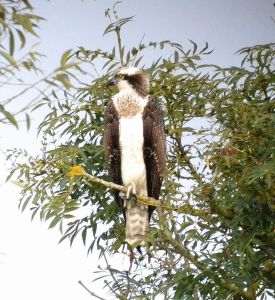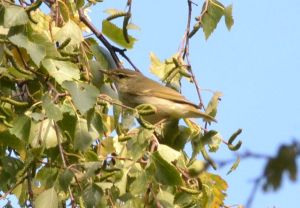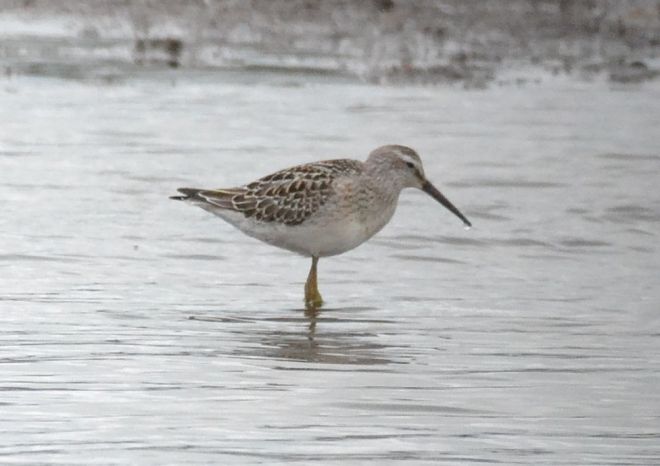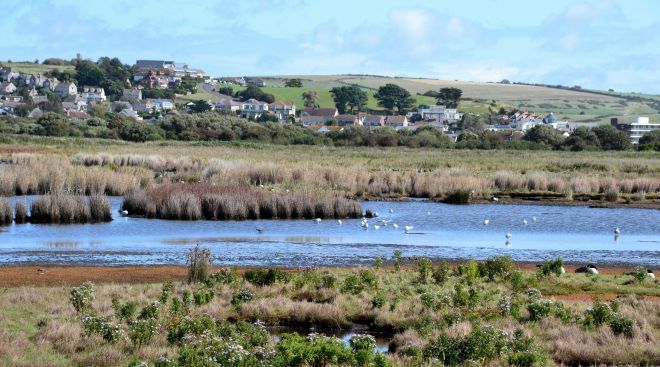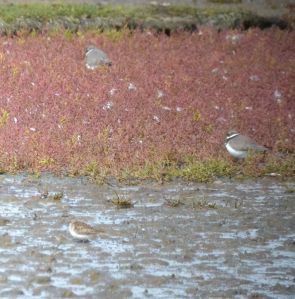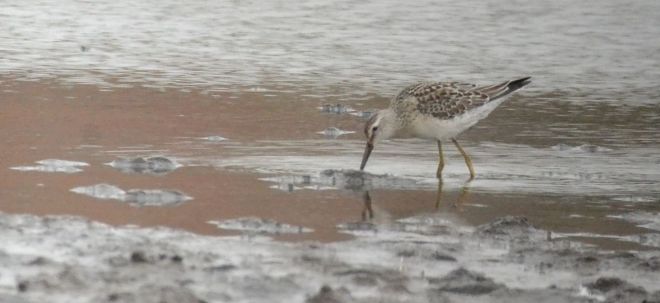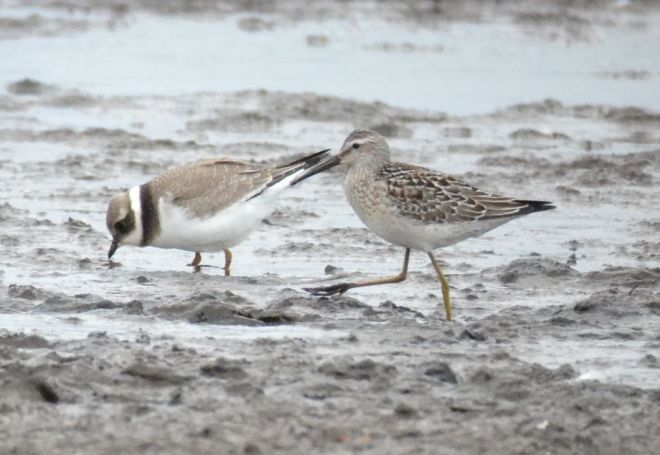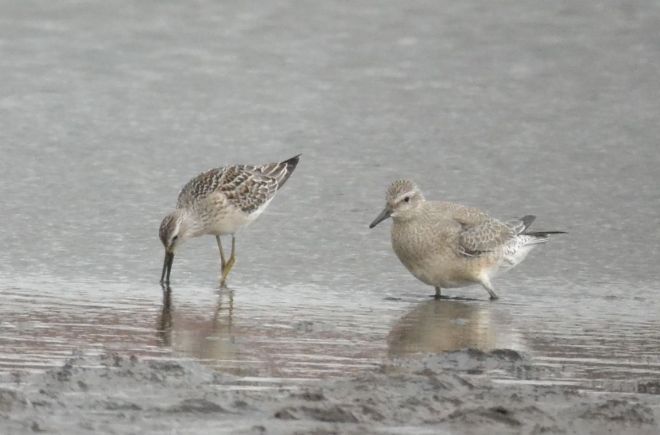Things are gearing up for what is predicted to be an outstanding autumn for migrant birds both nationally and locally. One feature so far has been a widespread wreck of Phalaropes at inland sites countrywide. There have now been four Grey Phalarope in Oxfordshire so far through September, then three days ago news broke of a scarcer still Red-necked Phalarope at Farmoor Reservoir, for me the county’s best birding site.
Having missed recently three important county birds through having committed to work – White-winged Black Tern, Wood Sandpiper and Kittiwake – I felt no inclination to go without for a fourth time and so set off at once without camera. The concrete wastes, as Oxon birders who opt to favour other county sites sometimes term Farmoor, resembled a roll-call of local birding as I walked around to where the Phalarope was said to be. On my approach the star visitor was swimming between two groups of birders close to the north-west shore of F1 and relief surged through me at an immediate connect.
I was impressed immediately by the bird’s different personality or “jizz” to the Grey Phalarope (above, right) that have graced Oxon with their presence in each of the last three autumns. I will not go into detailed plumage topography, but for me this juvenile Red-necked Phalarope (above, left) appeared slimmer, daintier and longer-billed than it’s larger, more uniformly black and white autumnal Grey cousin, with attractive patterning on the upperparts.
This was my third record of the species after previous sightings at Farlington Marshes, Hants in October 1987 and Bicester Wetland Reserve, Oxon in May 2015. That the latter bird was a county tick for several high (255+) listers is an indication of its scarcity. Both Phalaropes are Arctic breeders, but whilst Grey winters at sea in the south Atlantic, Red-necked migrates south-east across Europe to the Caspian, Black and Arabian Seas where they also lead a pelagic life. They are seldom seen in Britain once autumn gales have passed.
I had no time to linger, but a greater Scaup had also been found at Farmoor the same day and was another bird that should I be county year listing I would need to see. I therefore set off back across the causeway to search for this duck, with another Oxon birding colleague who needed to get back to work, but we could not locate it. So on Friday morning (22nd) I returned with the Scaup as my priority, though also hoping to photograph the Phalarope. I was prepared for this dual objective to take two more days.
The RNP was by now attracting some attention from out-of county birders, since this was an opportunity to get closer than usual to a scarce species. Friday’s largely bright and clear weather was also likely to attract photographers and other people with cameras, and so it transpired. The Phalarope was keeping its distance on this day, first on F1 then F2, and nobody I mixed with seemed especially interested in finding the Scaup. Then Ewan arrived, having seen and photographed the former well a day earlier, and so we headed out together to the southern end of F2 to track down the latter.
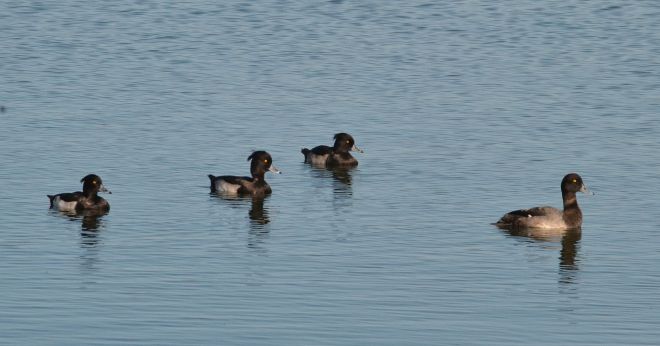
Eclipse drake Scaup (far right) with Tufted Ducks
In this company the eclipse drake Scaup proved easy to find associating with a flock of noticeably smaller Tufted Duck (pictured above). Scaup are usually found in Oxfordshire in autumn or early winter. Most of these migratory duck seen in Britain originate in Iceland with many wintering birds occurring in Scottish coastal waters and estuaries. Bigger populations breed in northern Scandinavia eastward across the whole of Siberia
On Saturday morning (23rd) Oxon Birding reported the RNP as still present and so I paid a third visit in three days with the specific intent of photographing the main attraction. I cannot recall seeing so many visiting birders at Farmoor Reservoir before, and with a big sailing club event also in progress the place was very crowded. I sighted a large knot of optics carriers about two-thirds of the way along the causeway and upon getting near two people walking away pointed out the Phalarope that had just relocated literally to beneath my feet. That was very nice of the bird, that this time was sticking to the water’s edge again and so my objective was at once accomplished.
It now remained to try to photograph the location’s third notable of the moment, a juvenile Shag. This is the last of 11 such seabirds that arrived at the end of August as part of a national movement for the species. Since then seven have moved on and three unfortunately died. Today another Oxon birder picked out the straggler on one of F1’s nesting rafts, from where it flew to the eastern shore. There we watched it swimming ever closer, before commencing to dive over and again at reasonable viewing distance.
I am told Shag puns have boosted the viewing figures of some other Oxon blogs recently, but that is not for me. Call me stuffy if you wish. I will not be entering these pictures (below) in any competitions but they record another important local bird this autumn, the initial 11 being the first record in Oxfordshire since 2012.
From tomorrow I am squeezing in an extra week’s trip abroad for this year, to Corsica. To help fund it I have been working an added weekly shift at the rizla kiosk cum petrol station for the last couple of months, but I intend to go back to three days a week when I return. The eight hour barrage by people concerned only with what they want is too tiring mentally to endure for more than that. In saying this I appreciate others who may be financially dependent upon such work do not have my choice, but I will be very glad of the break.















